The railroad track is miles away,
And the day is loud with voices speaking,
Yet there isn’t a train goes by all day
But I hear its whistle shrieking.
All night there isn’t a train goes by,
Though the night is still for sleep and dreaming,
But I see its cinders red on the sky,
And hear its engine steaming.
My heart is warm with the friends I make,
And better friends I’ll not be knowing;
Yet there isn’t a train I wouldn’t take,
No matter where it’s going.
“Travel” by Edna St. Vincent Millay
How did the railroads come to Montana?
The first railroad to arrive in Montana was the Utah & Northern Railroad, which crossed the Idaho-Montana border on May 9, 1880.
The line continued on to reach Butte in 1881 and Garrison, its terminus station, in 1883.
Construction on the line started in Ogden, Utah, after the Union Pacific Railroad and the Central Pacific Railroad finally connected in Promontory Point, Utah, leaving only a 400-mile (249 km) journey north to Montana, where gold mining was booming.
The 466-mile (750-km) narrow gage track that the Utah & Northern Railway built from Ogden, Utah, to Garrison, Montana, turned out to be the longest narrow gage track ever constructed.
The Northern Pacific Railroad, which originated in St. Paul, Minnesota, reached Billings shortly after. Other lines, such as the Butte, Anaconda, and Pacific Railway, and the Great Northern Railway also emerged, connecting towns within the state and the state to other regions of the country.
Tourist transportation to Montana boomed. Mining towns suddenly had a reliable means of bringing workers and equipment in, and minerals out. Towns like Billings, with the nickname “Magic City”, grew with rapid speed. The West was never the same.
Read on for a condensed history of how the railroads came to Montana, and how they’ve changed since.
Montana railroad history – How the railroads came to Montana [CONDENSED HISTORY]
Montana historic railroad map:
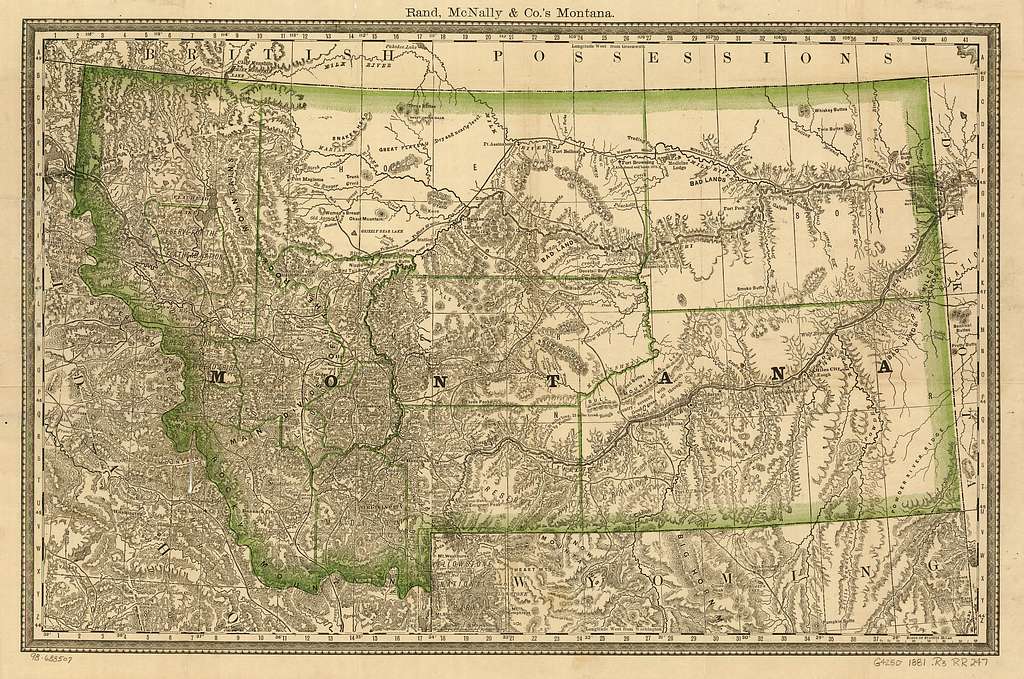
Before the railroads arrived in Montana, Montana was a distant, desolate place, occupying the far northwestern region of the enormous Louisiana Purchase, which had only recently been explored for the first time by Lewis and Clark.
It was a place that you read about in frontier literature. However, the excitement and romance of life on the western frontier was fleeting.
Montana was difficult to reach in the summer, and even harder to leave in the Winter. To get here, you had to travel on horseback or foot, which was a dangerous journey, subjecting you to the native tribes that resented the European intrusion.
Reaching Montana by steamboat, traveling 2,600 miles (4,184 km) up the Missouri River to Fort Benton was also an option. At the time, Fort Benton was a booming military fort and trading post, considered the Chicago of the West. However, Montana’s rivers dried up in the summer. Until the arrival of the railroads, Montana remained in a state of economic infancy.
When the railroad finally arrived in Montana, it was the most transformative economic development in the state’s entire history.
Railroad surveys across Montana
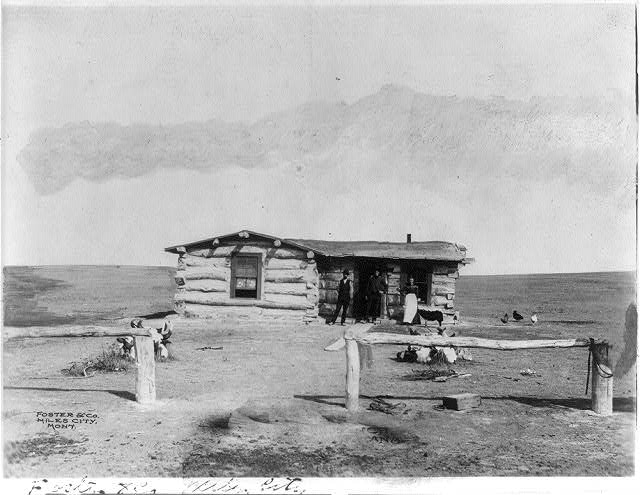
By 1861, plans for a Transcontinental Railroad had been developing for about 16 years, a proposed line that would connect the eastern states to the Pacific Coast, boosting the country’s economic development while creating trade opportunities with Asia.
At the time, it took five months to travel 2,000 miles (3,219 km) from the Missouri River to California by wagon.
Congress was unsure whether the Transcontinental Railroad line should connect to a southern or northern city on the West Coast, and in 1853, they authorized Secretary of War Jefferson Davis to manage surveys of the western United States to determine the line’s most suitable route to the Pacific.
Among the surveys was Isaac Stevens’ northern-tier transcontinental railroad survey through the then-unorganized land of present-day Montana (during this time, the land of present-day Montana didn’t belong to any territory).
Due to the harsh weather conditions, rough terrain, and the fact that it was unorganized land, they abandoned this region as a potential route.
The creation of Montana Territory in 1864, was part of an attempt to more effectively manage this wild and expansive area.
News of railroad lines to Montana sparks hope
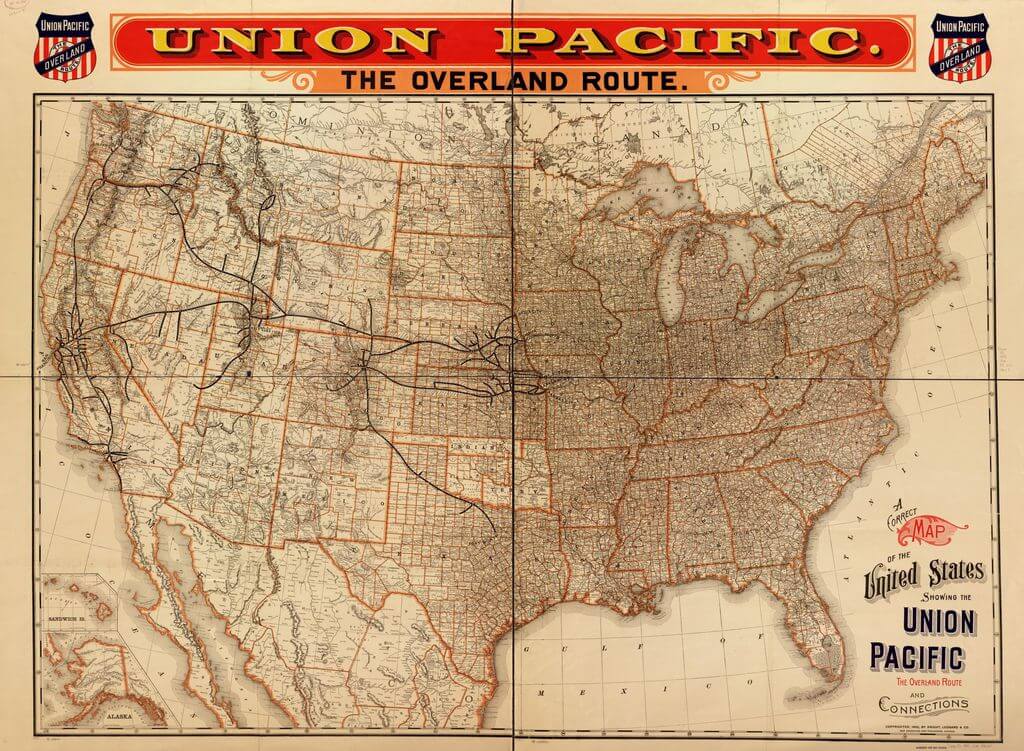
A year after the native Sioux tribe forced the closure of the Bozeman and Bridger trails in 1868, which connected southeast Wyoming to the mining towns of southwest Montana, the Union Pacific and the Central Pacific Railroad met at Promontory Point, Utah, where Central Pacific Railroad president Leland Stanford pounded the last stake in the Transcontinental Railroad.
The journey to Montana lay only 400 miles (249 km) north.
For decades, bullwhackers and their Murphy wagons had been making the journey from Utah to Montana on what was called the “Corrine Road” (along present-day I-15).
Bullwhackers and stagecoach operators followed the trail north from Ogden, Utah, across the jagged Bitterroot Mountains, into the mining camps of southeastern Montana, delivering 5 tonnes of goods and equipment at a time.
In 1871, the Utah Northern Railroad started construction on the Ogden – Butte line, which would follow the same general path as the Corrine Road.
Meanwhile, Congress had already approved the Northern Pacific Railroad, which was to connect St. Paul, Minnesota, and Seattle, Washington, via Montana.
Though news of both projects may have sparked hope among Montana residents, an economic recession, the Panic of 1873, halted both ventures.
First train to reach Montana
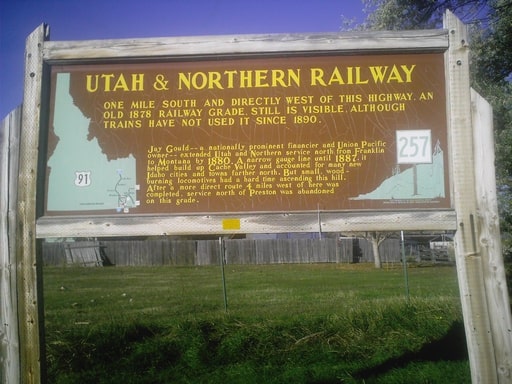
Despite the Panic of 1873’s impact on railroad plans, both the Utah Northern and Northern Pacific resumed operations within a couple of years, both under new financial management.
In 1877, the Utah Northern was bought out by Union Pacific under the direction of Sydney Dillon, (hence Dillon, Montana) and reincorporated as the Utah & Northern Railway.
Three years later, on May 9, 1880, the Utah & Northern’s 3-ft narrow gage line from Ogden crossed the 6,832 ft (10,995 km) elevation of Monida Pass on the Continental Divide on the Idaho-Montana border, becoming the first train to reach Montana and the longest narrow gage track in the country.
Interesting fact: With workers lined up along the entire 466-mile (750-km) track from Ogden to Montana, on July 24, 1887, the Union Pacific widened the entire 466 miles of three-foot (one-meter), narrow gage line to standard gauge (4 ft/1.2 m) in one day!
On December 21, 1881, the first train rolled into Butte Montana, one of the most prominent mining towns in the world at the time. Butte finally had a reliable means of transporting men, equipment, and other goods in and out of the town.
By this time, under the new financial management of Frederick Billings and Henry Dillard, the Northern Pacific had already reached Billings, which was now growing at an unprecedented pace.
Two years after the Utah & Northern reached Butte, the Northern Pacific reached its final destination of Gold Creek, Montana, just east of Missoula.
A new era of economic prosperity in Montana had begun.
Railroads in Montana – A new era
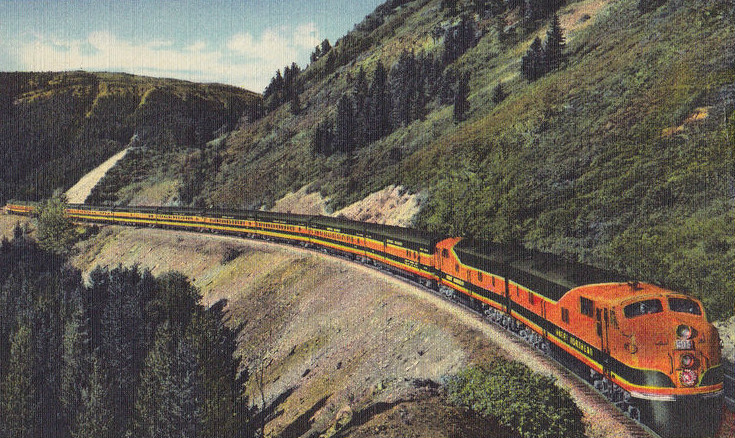
By 1882, thanks to the arrival of the railroads, Butte was producing 9 million pounds (4,082,331 kg) of copper.
Cities such as Billings seemed to blossom out of thin air with their arrival. Billings’ enormous boom after the arrival of the Northern Pacific is what garnered its nickname the ‘Magic City’. Today, Billings is the largest city in the state.
Before reaching Butte in 1881, the Utah & Northern stopped at a 465-acre ranch in southwest Montana, then known as “Terminus”.
As the location grew into a major transport hub for nearby mining towns, the newly-formed town was renamed Dillon, after railroad president Sydney Dillon, who was largely responsible for the area’s economic development at the time.
When gold started drying up in the late 1880s, Dillon, Montana, had already become a stop-off point on the railroads for travelers headed west to Oregon. The railroads had also given local farmers and ranchers access to out-of-state markets.
Thanks to the railroads, new towns like Dillon emerged and thrived all across the state.
Railroads appear across much of the state
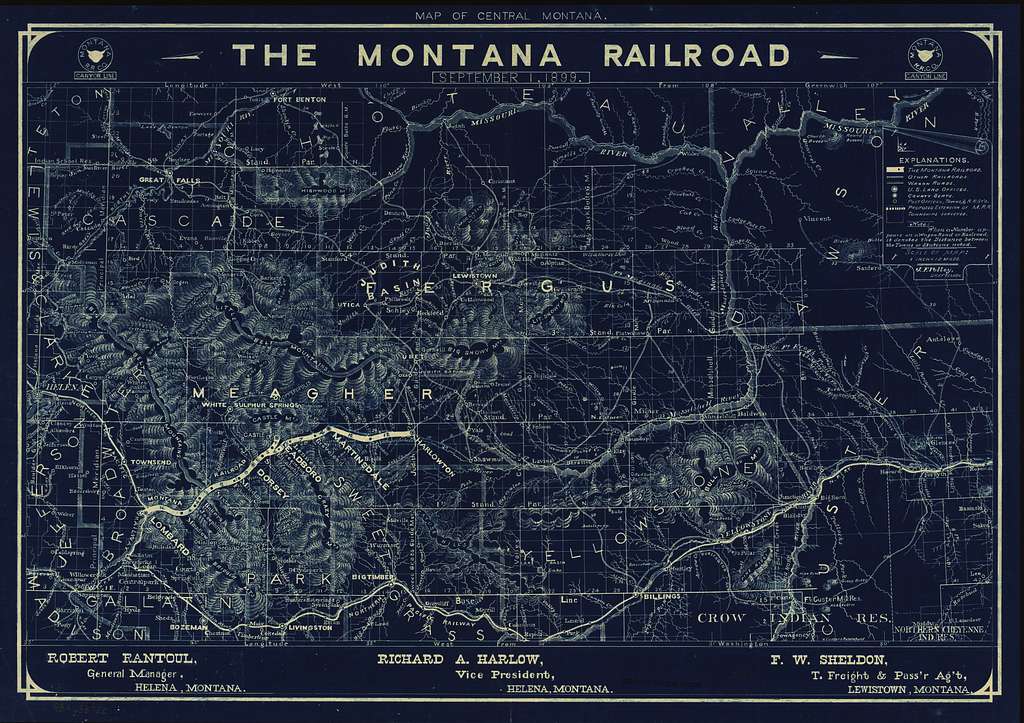
By 1883, the Utah & Northern reached its final destination of Garrison, Montana.
By 1889, the Northern Pacific created the Butte short line, and by 1892, the Butte, Anaconda, & Pacific Railway was built to transport passengers and copper ore.
By 1893, the Montana Railroad line from east of Helena to central Montana was completed.
In 1908, the Montana Railroad was absorbed by the Chicago, Milwaukee, St. Paul, & Pacific Railroad as they continued to branch out across the state.
In 1889, James J. Hill had already established the Great Northern Railway, which was to be the northernmost transcontinental railroad to cross the United States, from St. Paul, Minnesota to Seattle, Washington via Montana.
As the Great Northern Railway extended across North Dakota and Montana’s Hi-Line, it enthusiastically promoted settlement along its lines. Numerous towns, such as Havre and Glasgow, emerged along its lines.
The Great Northern Railway later merged with the following railways:
- Northern Pacific
- Burlington Northern
- Topeka and Santa Fe Railroad
Together, they formed the Burlington Northern & Santa Fe Railroad (BNSF), which remains the largest railroad company in present-day Montana, operating 59% of the rail miles across the state.
BNSF is also the largest freight network in the U.S., with 32,500 miles (52,300 km) of track across 28 states.
20th-century decline of railroads in Montana
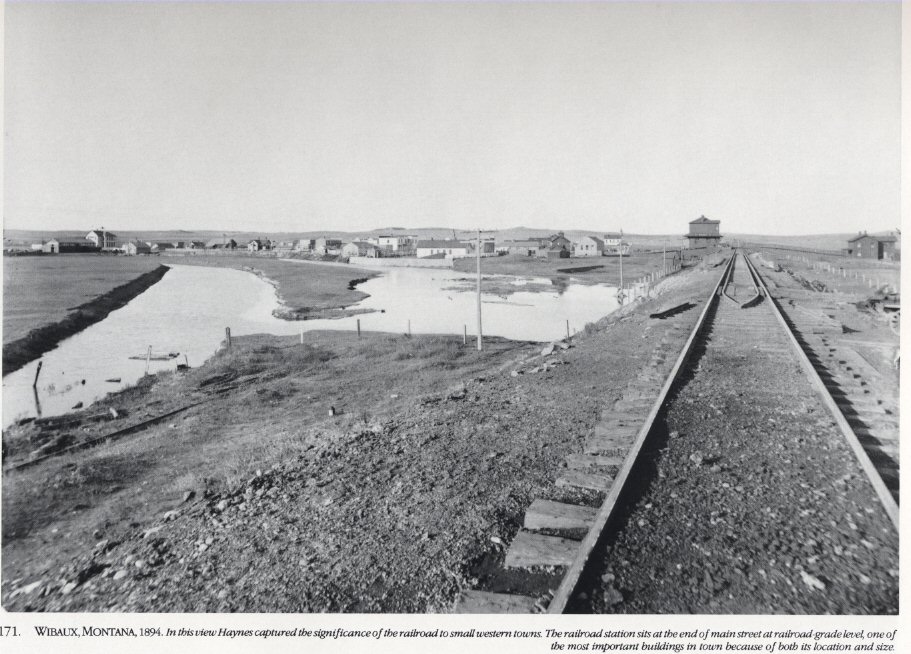
Despite this enormous growth, the popularity of the railroads in Montana didn’t last long. While railways still play an integral role in Montana and the western United States’ present-day economy, the size of the railroad network across the state has shrunk substantially.
During the railroad’s peak in Montana, the state was home to three Chicago to Seattle main lines and held the longest stretch of electrified rail lines in the country.
Since then, Montana has lost roughly 1,300 mi (2,092 km) of track, including hundreds of miles along Milwaukee Roads’ famous Pacific Extension and much of the North Pacific and Great Northern branch lines.
Montana railroads today
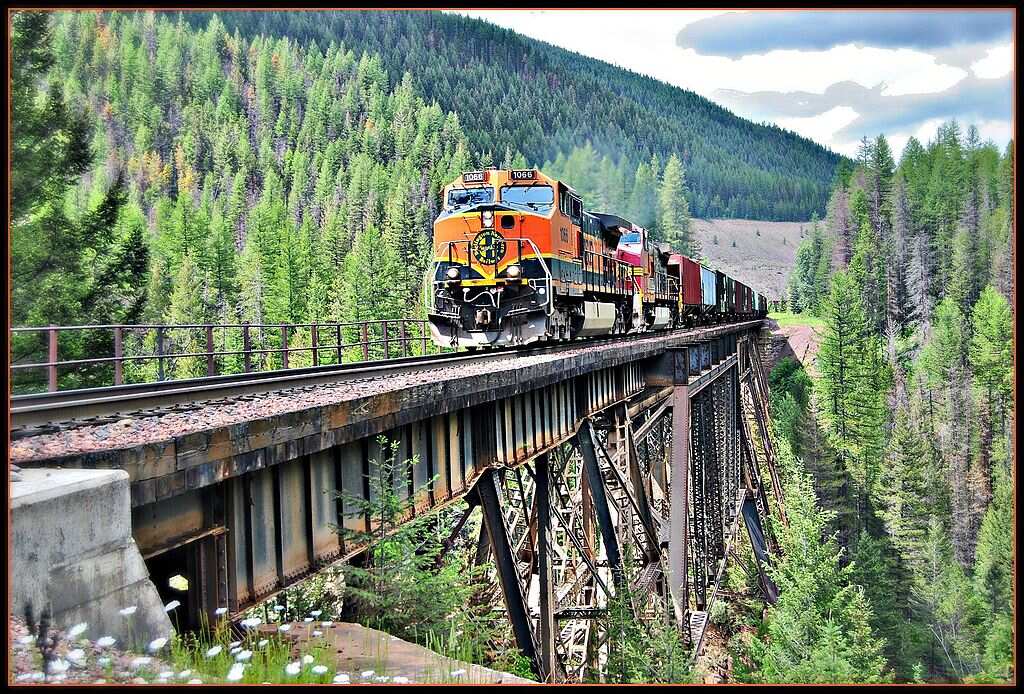
Today, over 3,300 miles (5,311 km) of track span across Montana, most of which is used for transporting freight.
Montana’s railroads carry the most tonnage of freight in the state, including 48% of the freight that originates within the state.
Twelve companies operate freight trains on these tracks, including the BNSF, Union Pacific, and Central Montana Rail.
Only one passenger line remains in the state today: the Amtrak’s Chicago-Seattle line, which traverses across northern Montana’s Hi-Line.
If you ever get the opportunity to ride Amtrak’s Chicago-Seattle line across northern Montana, we highly recommend it. Take a step back in time to one of the original technological advancements of the West, and ride the railroad across northern Montana.
FAQ – Montana railroad history
Below you can find answers to commonly asked questions about Montana’s railroad history.
When did the railroad come to Montana?
The first railroad to arrive in Montana was the Utah & Northern Railroad’s narrow gauge line, which originated in Ogden, Utah, and arrived in Montana via Monida Pass on the State’s southwestern border on May 9, 1880.
The line continued on, reaching Butte, Montana, in December of 1881 and its terminus at Garrison, Montana, in 1883.
Who built the railroads in Montana?
Much of Montana’s present-day railroad tracks were constructed by the companies that first established railroads across the state in the late 1800s, such as the Utah & Northern Railway, the Great Northern Railroad, the Montana Railroad, and the Northern Pacific Railroad.
The Utah & Northern Railway first crossed into Montana from the southwestern border with Idaho, and the Great Northern Railroad first crossed into Montana from its eastern border with North Dakota.
The Great Northern Railway later merged with the Northern Pacific, Burlington Northern, and the Topeka and Santa Fe Railroad to form the Burlington Northern & Santa Fe Railroad (BNSF), the largest railroad company in Montana and the United States.
Why did Montana need railroads?
Montana needed railroads as a reliable and fast means of transportation to connect Montana towns with each other and Montana with other regions of the country.
Before the arrival of the railroads in Montana, the state was a vast, expansive region with harsh weather and extreme terrain in a distant northwestern region of the country.
Montana was only reachable by wagon, horseback, or foot along dangerous trails, or via steamboat up the Missouri before the rivers dried up in the summer.
With the arrival of railroads in Montana, the state acquired a much-needed means of quickly and reliably transporting people, equipment, and goods within Montana and between Montana and other regions of the country.
What was the first railroad in Montana?
The first railroad in Montana was the Utah & Northern’s narrow gauge line, which crossed from Idaho over Monida Pass into southwest Montana on May 9, 1880.
The Utah & Northern line reached Butte, Montana in December 1881. Upon its completion, it was the longest narrow gauge railroad ever built, stretching 466 miles (750 km) from Ogden, Utah, to Garrison, Montana.
What town in Montana was settled by railroad?
Numerous towns in Montana were settled by the railroad, including Livingston, Kalispell, and Dillon.
When the Utah & Northern Railroad first crossed into Montana in 1880, it stopped at a small ranch in the beautiful Beaverhead Valley of southwestern Montana.
Named Terminus, the ranch became a main railroad transport hub for the region. As its population grew, it developed into a town with a strong economy and was later renamed Dillon. Today, Dillon remains one of Montana’s primary southwestern towns.


